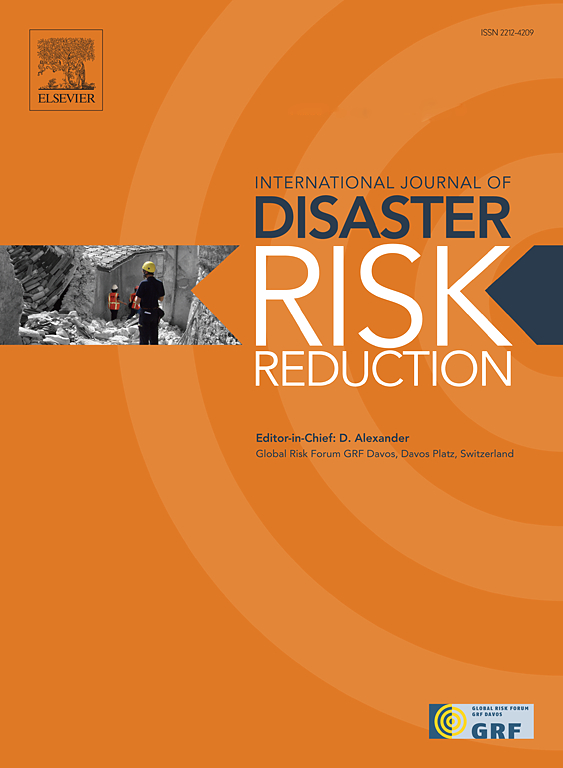Seismic performances of Italian schools: A comprehensive overview of risk assessment, retrofitting, and preparedness strategies
IF 4.2
1区 地球科学
Q1 GEOSCIENCES, MULTIDISCIPLINARY
International journal of disaster risk reduction
Pub Date : 2025-05-10
DOI:10.1016/j.ijdrr.2025.105508
引用次数: 0
Abstract
Schools in Italy play a critical societal role, both as centers of education and as vital community shelters during seismic events. Yet many Italian school buildings predate modern seismic codes and thus remain vulnerable to frequent earthquakes. This review consolidates current knowledge on the seismic performance of these structures, encompassing both historical masonry buildings and reinforced concrete frames designed primarily for gravity loads. It examines observed damage patterns in structural and non-structural components and highlights the urgency for comprehensive retrofit strategies. From traditional strengthening measures—such as fiber-reinforced polymers and steel bracings—to more advanced techniques like base isolation and supplemental damping, diverse solutions are presented alongside illustrative case studies that showcase outcomes and best practices. Recognizing that technical feasibility is only one dimension of risk mitigation, the review also explores multi-criteria decision-making frameworks that integrate economic, social, and environmental considerations for prioritizing intervention measures across large building portfolios. In addition, it underscores the importance of proactive school-based risk awareness programs and early warning systems to enhance occupant safety and ensure continuity of educational activities. Through the synthesis of existing literature and real-world applications, this paper identifies critical knowledge gaps—particularly the need for better large-scale data integration and refined performance-based methods tailored to school contexts. Overall, it provides policymakers, engineers, and educators with evidence-based guidance to bolster resilience in Italian schools, with implications that extend to similarly vulnerable regions worldwide.
意大利学校的抗震性能:风险评估、改造和准备策略的全面概述
意大利的学校扮演着重要的社会角色,既是教育中心,也是地震期间重要的社区避难所。然而,许多意大利学校建筑早于现代地震规范,因此仍然容易受到频繁地震的影响。这篇综述巩固了目前关于这些结构抗震性能的知识,包括历史上的砖石建筑和主要为重力荷载设计的钢筋混凝土框架。它检查了观察到的结构和非结构部件的损坏模式,并强调了全面改造战略的紧迫性。从传统的加固措施(如纤维增强聚合物和钢支撑)到更先进的技术(如基础隔离和补充阻尼),各种解决方案以及演示性案例研究展示了结果和最佳实践。认识到技术可行性只是降低风险的一个方面,该审查还探讨了多标准决策框架,该框架综合了经济、社会和环境方面的考虑,以便在大型建筑组合中优先考虑干预措施。此外,它强调了积极主动的基于学校的风险意识计划和早期预警系统的重要性,以提高居住者的安全和确保教育活动的连续性。通过对现有文献和现实世界应用的综合,本文确定了关键的知识缺口,特别是需要更好的大规模数据集成和针对学校环境量身定制的基于绩效的改进方法。总体而言,它为政策制定者、工程师和教育工作者提供了基于证据的指导,以增强意大利学校的韧性,并将其推广到世界上同样脆弱的地区。
本文章由计算机程序翻译,如有差异,请以英文原文为准。
求助全文
约1分钟内获得全文
求助全文
来源期刊

International journal of disaster risk reduction
GEOSCIENCES, MULTIDISCIPLINARYMETEOROLOGY-METEOROLOGY & ATMOSPHERIC SCIENCES
CiteScore
8.70
自引率
18.00%
发文量
688
审稿时长
79 days
期刊介绍:
The International Journal of Disaster Risk Reduction (IJDRR) is the journal for researchers, policymakers and practitioners across diverse disciplines: earth sciences and their implications; environmental sciences; engineering; urban studies; geography; and the social sciences. IJDRR publishes fundamental and applied research, critical reviews, policy papers and case studies with a particular focus on multi-disciplinary research that aims to reduce the impact of natural, technological, social and intentional disasters. IJDRR stimulates exchange of ideas and knowledge transfer on disaster research, mitigation, adaptation, prevention and risk reduction at all geographical scales: local, national and international.
Key topics:-
-multifaceted disaster and cascading disasters
-the development of disaster risk reduction strategies and techniques
-discussion and development of effective warning and educational systems for risk management at all levels
-disasters associated with climate change
-vulnerability analysis and vulnerability trends
-emerging risks
-resilience against disasters.
The journal particularly encourages papers that approach risk from a multi-disciplinary perspective.
 求助内容:
求助内容: 应助结果提醒方式:
应助结果提醒方式:


